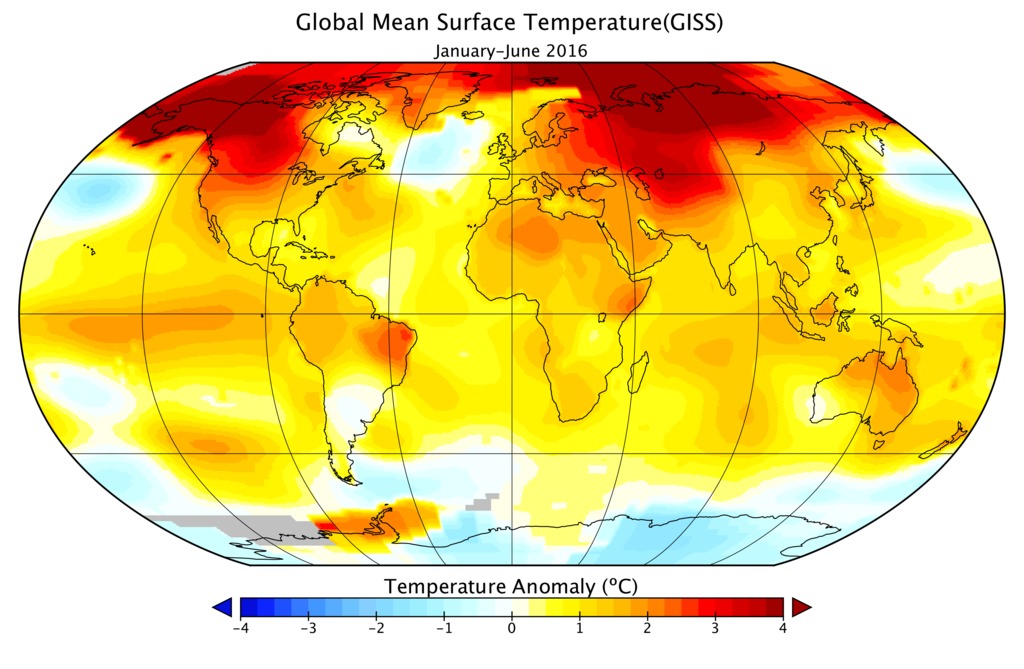Arctic Sea Ice Extent: January - June 2016
In this animation, the Earth rotates slowly as the Arctic sea ice advances over time from January 18 through July 7, 2016
Satellite-based passive microwave images of the sea ice have provided a reliable tool for continuously monitoring changes in the Arctic ice since 1979. Every summer the Arctic ice cap melts down to what scientists call its "minimum" before colder weather begins to cause ice cover to increase. The first six months of 2016 have been the warmest first half of any year in our recorded history of surface temperature (which go back to 1880). Data shows that the Arctic temperature increases are much bigger, relatively, than the rest of the globe.
The Japan Aerospace Exploration Agency (JAXA) provides many water-related products derived from data acquired by the Advanced Microwave Scanning Radiometer 2 (AMSR2) instrument aboard the Global Change Observation Mission 1st-Water "SHIZUKU" (GCOM-W1) satellite. Two JAXA datasets used in this animation are the 10-km daily sea ice concentration and the 10 km daily 89 GHz Brightness Temperature.
In this animation, the daily Arctic sea ice and seasonal land cover change progress through time, from January 18, 2016, through July 7, 2016. Over the water, Arctic sea ice changes from day to day showing a running 3-day minimum sea ice concentration in the region where the concentration is greater than 15%. The blueish white color of the sea ice is derived from a 3-day running minimum of the AMSR2 89 GHz brightness temperature. Over the terrain, monthly data from the seasonal Blue Marble Next Generation fades slowly from month to month.
Credits
Please give credit for this item to:
NASA's Scientific Visualization Studio
-
Animators
- Trent L. Schindler (USRA)
- Cindy Starr (Global Science and Technology, Inc.)
-
Producer
- Matthew R. Radcliff (USRA)
Release date
This page was originally published on Tuesday, July 19, 2016.
This page was last updated on Tuesday, November 14, 2023 at 12:08 AM EST.
Datasets used in this visualization
-
10 km Daily Sea Ice Concentration [SHIZUKU (GCOM-W1): AMSR2]
ID: 795Credit: AMSR2 data courtesy of the Japan Aerospace Exploration Agency (JAXA).
See all pages that use this dataset -
10 km Daily 89 GHz Brightness Temperature [SHIZUKU (GCOM-W1): AMSR2]
ID: 796Credit: AMSR2 data courtesy of the Japan Aerospace Exploration Agency (JAXA).
See all pages that use this dataset
Note: While we identify the data sets used in these visualizations, we do not store any further details, nor the data sets themselves on our site.
